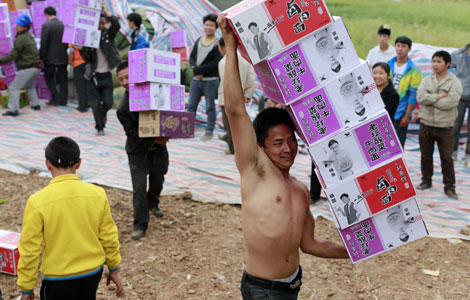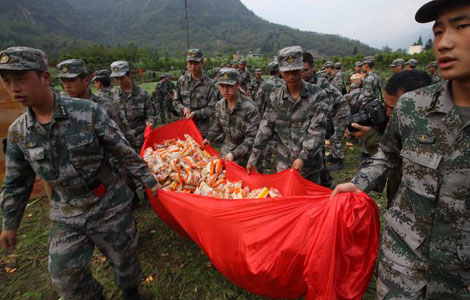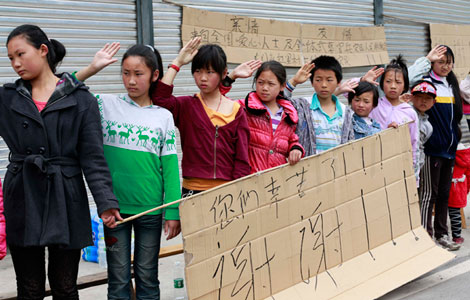Air pollution top priority
Updated: 2012-02-10 14:55
(China Daily)
|
||||||||
That controlling PM2.5 has been made top priority on the municipal government of Beijing's 2012 list of public welfare projects is indeed beyond many people's expectations.
Yet in spite of the loud public outcry for addressing the deteriorating local air quality, which slid to unacceptable levels late last year, the city is embarrassingly unprepared for such a challenge. After all, the city is yet to declare substantial headway in dealing with the much larger PM10 particles in the atmosphere.
The difficulty in controlling PM2.5 is compounded by the fact that facilities for monitoring the minute particles are just beginning to appear in the city, and there are no agreed standards in existence.
Still, we appreciate the municipal authority's resolve to tackle this issue. This indeed is an overriding concern shared by everyone living and working in the capital.
However, no matter how anxious we are for significant progress in the fight against the invisible fine particles, it will inevitably turn out to be a protracted process. There is no magic formula that will work wonders overnight.
But by committing itself to this difficult mission, the local authorities have displayed the courage to face complaints about slow progress.
And the decision doesn't look impromptu. It is based on a plan that will last to 2020, and has the support of specific environmental improvement steps.
The very first move, planting 133 square kilometers of forests in and around the city this year, does not seem impressive enough for dealing with PM2.5, which derives mainly from motor vehicle exhausts, fuel burning and building sites. But they may prove a useful defense against particulates blown into the city from neighboring areas.
Aside from this welcome greening project, however, all the other measures may meet resistance in implementation.
Disqualifying old vehicles, upgrading motor vehicle emission standards, remodeling boilers, and even imposing stricter dust-control standards at construction sites will raise a cost problem for the individuals and institutions involved.
Making better use of the public transport system is widely believed to be an effective way to reduce air pollution. But for public transport to appeal to more local residents, it has to be convenient enough. That, too, calls for substantial financial investment.
And since one-fourth of the PM2.5 particulates are of non-local origins, the city has to effectively engage surrounding areas in the process. It will not be fair for the city's neighbors to make sacrifices without due compensation. But to what extent, and in what manner, can the city contribute to the industrial restructuring its neighbors need?
This is a question the city cannot afford to ignore.

 Relief reaches isolated village
Relief reaches isolated village
 Rainfall poses new threats to quake-hit region
Rainfall poses new threats to quake-hit region
 Funerals begin for Boston bombing victims
Funerals begin for Boston bombing victims
 Quake takeaway from China's Air Force
Quake takeaway from China's Air Force
 Obama celebrates young inventors at science fair
Obama celebrates young inventors at science fair
 Earth Day marked around the world
Earth Day marked around the world
 Volunteer team helping students find sense of normalcy
Volunteer team helping students find sense of normalcy
 Ethnic groups quick to join rescue efforts
Ethnic groups quick to join rescue efforts
Most Viewed
Editor's Picks

|

|

|

|

|

|
Today's Top News
Health new priority for quake zone
Xi meets US top military officer
Japan's boats driven out of Diaoyu
China mulls online shopping legislation
Bird flu death toll rises to 22
Putin appoints new ambassador to China
Japanese ships blocked from Diaoyu Islands
Inspired by Guan, more Chinese pick up golf
US Weekly

|

|







